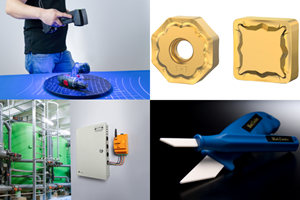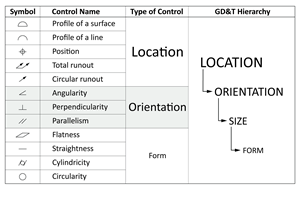Delcam has extended the range of EDM equipment supported by its integrated solution for the design, machining and inspection of electrodes. Delcam Electrode can now provide scripts for all the leading manufacturers, including AgieCharmilles (Agievision and CT Millennium controls), Makino EDM, Mitsubishi Electric, ONA EDM, OPS-Ingersoll, Sodick and Zimmer & Kreim.
Scripts are the EDM equivalent of CAM programs for machine tools. They provide an automated process for the programming of the machine, instead of users having to program manually from a set-up sheet. The automated process is much easier and quicker, especially when a number of electrodes are being used on the same component, the company states. In addition, the direct link removes the human error that could always be possible with manual programming.
Delcam Electrode is a completely integrated solution for the design, machining and inspection of electrodes that has been made possible through a combination of developments in Delcam’s PowerSHAPE CAD software, PowerMILL CAM system and PowerINSPECT inspection software. At the heart of the solution is a new file format—the .Trode file. This contains all the information for each electrode project, including not only the electrode design but also the machining and inspection information, plus the set-up sheets for its manufacture and use. Having all the required information in a single file simplifies data management as well as increasing overall efficiency.
All the information in the .Trode file can be included in the script, including the electrode and work piece geometry and materials; the burn locations, areas and depths; and the various under-sizes for the rougher, semi-finisher and finisher electrodes. The exact output is tailored to the particular equipment, for example, some machines don’t accept the geometry, while others run a viewer program which can display the electrode and work piece geometry, and simulate the sinking process.
The initial design stage of the process with Delcam Electrode is both quick and easy thanks to the wide range of direct modeling tools available within PowerSHAPE. Users simply define the region where the electrode will be used, extract the shape needed to produce the required feature in the part, and then edit the design to provide clearance from the main surface of the tool and to blend it into the blank size needed to fix the electrode into its holder.
Analysis tools are available to check that the draft angles and minimum radii used in the design will not cause downstream problems, while the ability to simulate the action of the electrode ensures that it will operate as expected. To speed the design process further, catalogues of blanks and holders are included from Erowa, Hirschman and System 3R. Users can add their own standard sizes to these databases.
Once the design has been finalized, the necessary spark gaps can be specified to provide the machining offsets required in PowerMILL to cut the roughing and finishing electrodes. Inspection points can also be added so that the measurement of the electrode in PowerINSPECT can be automated to a large extent. Then, set-up sheets for the electrode’s manufacture and use can be produced automatically, either to a standard format or to a user-defined template.
Companies that produce multiple electrodes of similar sizes from the same material can develop templates within PowerMILL to machine them in a standardised way. Burn, clearance and blank faces of the electrode are automatically color-coded within PowerSHAPE so that they can be recognized within PowerMILL. The size of the material block and the spark gaps for the electrode family are also read from the .Trode file and applied to the toolpaths automatically. Once the templates have been created, generating the machining toolpaths becomes a fully-automated process.
Specifying the inspection points within PowerSHAPE means that the probe path in PowerINSPECT and the production of the inspection report can also be automated, including undertaking a best-fit analysis of the machined electrode. However, all of PowerINSPECT’s flexibility is available if extra measurements are needed from any areas of the part that are causing concern. The results of the inspection are added to the .Trode file for quality control records.
The automated generation of set-up sheets for both the machining and application of the electrodes ensures that all the data needed at each stage is readily available. A documentation pack, including the GA and detail sheets, can be issued as drawings, HTML files or Microsoft Excel spread sheets. All these options make communication easy between the various people involved in the design, manufacture and use of the electrodes.
Related Content
Tolerancing in Mold Design, Part 1: Understanding the Issues of Conventional Bilateral Tolerancing
Mold designers must understand the location, orientation and form limitations of conventional tolerancing before changing to another dimensioning system.
Read MoreNew Innovations in Mold Design, Milling Cutters, 3D Scanning
MoldMaking Technology compiles a number of digital-only products from the past month, including mold design software, laser metrology 3D scanners, milling cutters and more.
Read MoreThe In's and Out's of Ballbar Calibration
This machine tool diagnostic device allows the detection of errors noticeable only while machine tools are in motion.
Read MoreTolerancing in Mold Design, Part 2: Using GD&T to Address Conventional Tolerancing Issues
Mold designers can achieve a single interpretation of workpiece functionality when following the American Society of Mechanical Engineers Geometric Dimensioning and Tolerancing standard.
Read MoreRead Next
Are You a Moldmaker Considering 3D Printing? Consider the 3D Printing Workshop at NPE2024
Presentations will cover 3D printing for mold tooling, material innovation, product development, bridge production and full-scale, high-volume additive manufacturing.
Read MoreHow to Use Continuing Education to Remain Competitive in Moldmaking
Continued training helps moldmakers make tooling decisions and properly use the latest cutting tool to efficiently machine high-quality molds.
Read MoreReasons to Use Fiber Lasers for Mold Cleaning
Fiber lasers offer a simplicity, speed, control and portability, minimizing mold cleaning risks.
Read More

















_300x250 4.png;maxWidth=300;quality=90)







